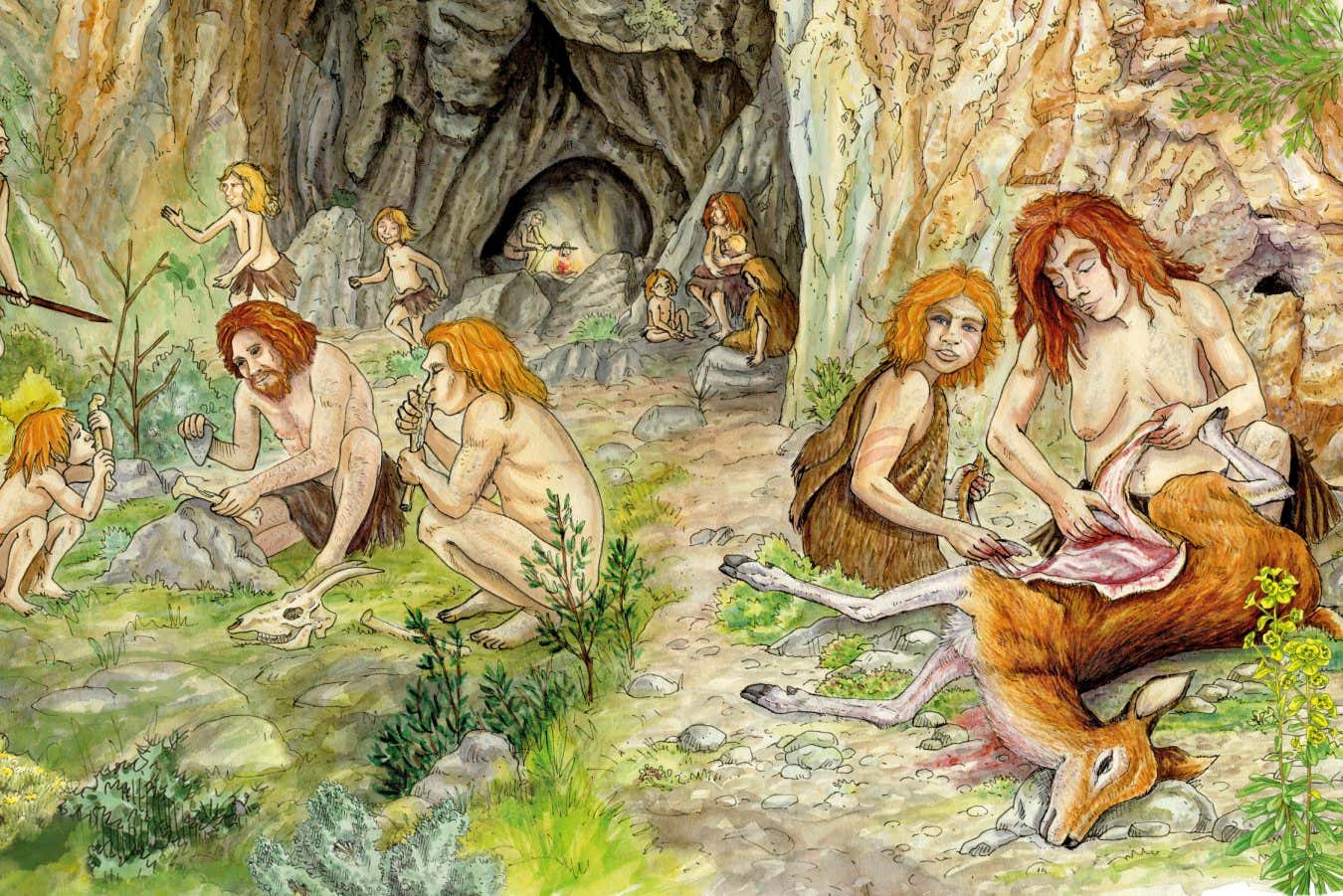Now Reading: Neanderthals Showed Distinct Regional Food Cultures
-
01
Neanderthals Showed Distinct Regional Food Cultures
Neanderthals Showed Distinct Regional Food Cultures

Rapid Summary
- Neanderthal groups in northern israel had distinct ways of butchering and preparing food, influenced by social or cultural factors.
- Two caves, Amud and Kebara (70 km apart), show differences in food preparation despite similar prey types, landscape, weather, and tools.
- Researchers analyzed cut marks on bones from prey animals like gazelles and found that Kebara had more variable cuts while Amud’s cut marks were concentrated in clusters.
- Bone analysis suggests deliberate choices influenced techniques rather than lack of expertise.Amud’s methods might reflect additional processing steps such as drying or hanging meat before cooking.
- Cultural practices may have been learned and passed through generations within the two groups occupying these sites up to 60,000 years ago.
Indian Opinion Analysis
The research provides fascinating insight into the cultural nuances of early hominin behaviour. The varied butchery practices at two closely located Neanderthal sites suggest that even prehistoric communities could possess distinct food traditions shaped by societal preferences rather than just practical needs. For modern India’s anthropological studies, such evidence reinforces the value of examining conventional practices for understanding human heritage. Additionally, this revelation highlights how local knowledge systems can persist over time-a concept relevant for safeguarding India’s diverse socio-cultural traditions today.

























